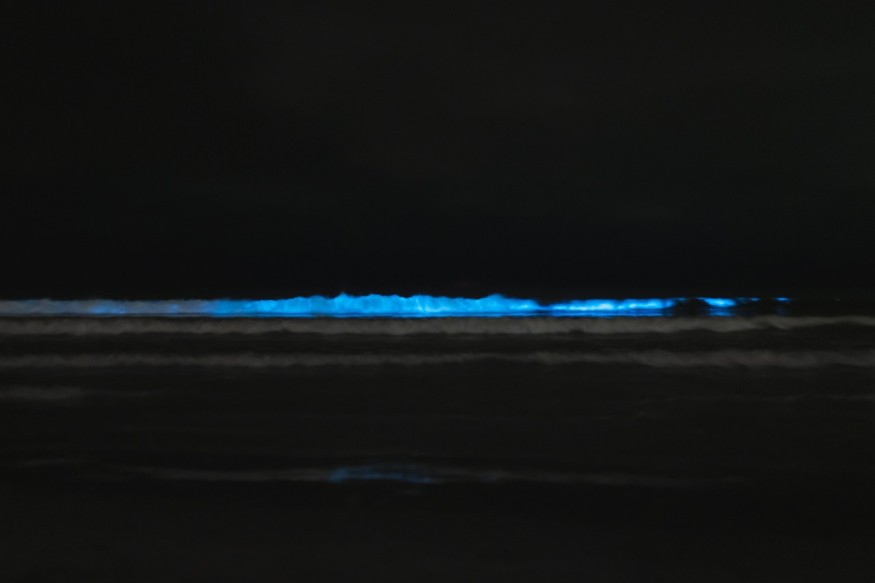
A beach in South Australia was found to host a natural light show in its waters thanks to the washing up of bioluminescent phytoplankton. This natural phenomenon made the sea vibrantly showcase an electric blue hue that family and friends on the beach got to witness and enjoy.
Natural Water Light Show in Port Lincoln Beach Thanks to Bioluminescent Algae
Families and friends gathered on the beach in the coastal town of the Eyre Peninsula got to witness this interesting natural phenomenon.
Bioluminescent algae, bioluminescent dinoflagellates, or sea sparkles are organisms with single cells that flourish in warm and shallow waters such as the South Australian coasts. They typically flash when their direct environment experiences disturbances.
While it is difficult to pinpoint the exact flourishing season of these organisms, their colors display when their numbers boom. A plankton's buildup from an algae bloom leads to a vibrant glow in the ocean when water gets disturbed or when waves wash up.
As such, the best condition for viewing the natural phenomenon is in total darkness. During the daytime, the marine creatures have a hazy pink or red tone.
Associate professor Ivan Nagelkerken from the University of Adelaide explains that nutrients, salinity, and temperature in the water are all factors that can facilitate ideal conditions for algae to bloom. When the water experiences agitation, the heightened oxygen fosters a chemical reaction that leads to bioluminescence.
Scientists think that bioluminescence is a mechanism used for deterring or confusing predators.
In the last five years, the bloom has taken place a couple of times in Port Lincoln's Eyre Peninsula town in South Australia. However, some locals think that the bloom this year was the strongest.
Bioluminescent algae could have pink, green, or blue colors. However, they only happen in certain areas across the globe. South Australia is typically affected by such a phenomenon.
Other creatures that exhibit the unique mechanism of bioluminescence are jellies and fireflies. While some of them can be found on land, most of these creatures can be found in the aquatic world.
ALSO READ : First Time in 60 years! Bioluminescent Plankton Lights Up Puerto Marques Beach at Acapulco
Are Bioluminescent Algae Safe?
While this sight could be a wonder to see, the CSIRO warns that there are microalgae that produce dangerous toxins that could be detrimental to animals and humans alike. Because of this, they advise having some distance from the blooms when viewing them. It is generally recommended to avoid getting into direct contact with the algae and to simply observe the sight from a safe distance.
The CSIRO advises that some algae could proliferate in blooms, be destructive to marine life, take in oxygen, and lead to health risks. Knowing algal blooms that are harmful is crucial to managing the health of the environment.
RELATED ARTICLE : Melting Snow Caps in the Himalayas Cause Toxic Glowing Green Algae to Bloom Big Enough to be Seen From Space
Check out more news and information on Environment & Climate in Science Times.
© 2025 ScienceTimes.com All rights reserved. Do not reproduce without permission. The window to the world of Science Times.












